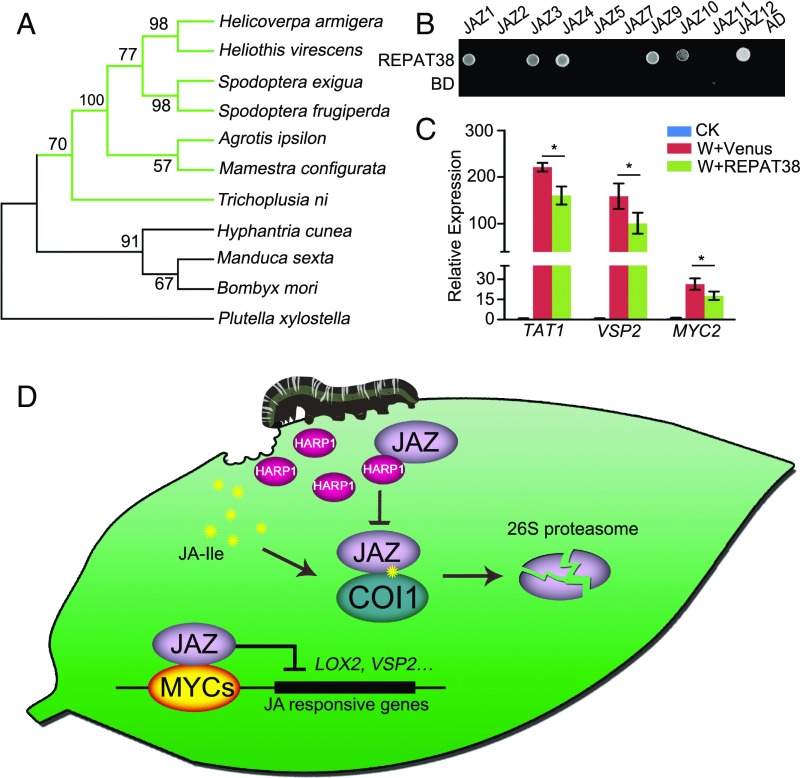Fig. 5.
HARP1-like proteins highly conserved in Noctuidae and have similar function as effectors. (A) Phylogenetic analysis of HARP1 proteins in Lepidoptera insects. HARP1 (H. armigera) and the homologous proteins in Heliothis virescens, Spodoptera frugiperda, S. exigua, Agrotis ipsilon, Mamestra configurata, Trichoplusia ni, Hyphantria cunea, Manduca sexta, Bombyx mori, and P. xylostella were analyzed. The green lines represent these insects belongs to Noctuidae. (B) Yeast two-hybrid assay. REPAT38 was fused to GAL4 DNA-binding domain (BD), and the indicated JAZs were fused to GAL4 activation domain (AD), respectively. Interactions were examined with 1 mM 3-amino-1,2,4-triazole. (C) Gene expressions were less induced upon wounding in the presence of REPAT38. Samples were collected 2 h after treatment (W), and the indicated gene expressions were detected by qRT-PCR. The gene expression in unwounded plant was set to 1. Data were analyzed by Student’s t test. *P < 0.05, Error bars represent ± SD (n = 3 biological replicates). (D) Working model of HARP1 in plant–insect interaction. When H. armigera larvae feed on plant leaves, the wounding damage triggers the JA signaling. Meanwhile, the larval effector HARP1 in OS is released into plant cells and interacts with JAZs to prevent COI1–JAZ interaction and JAZ degradation, repressing the JA-regulated defense response.

